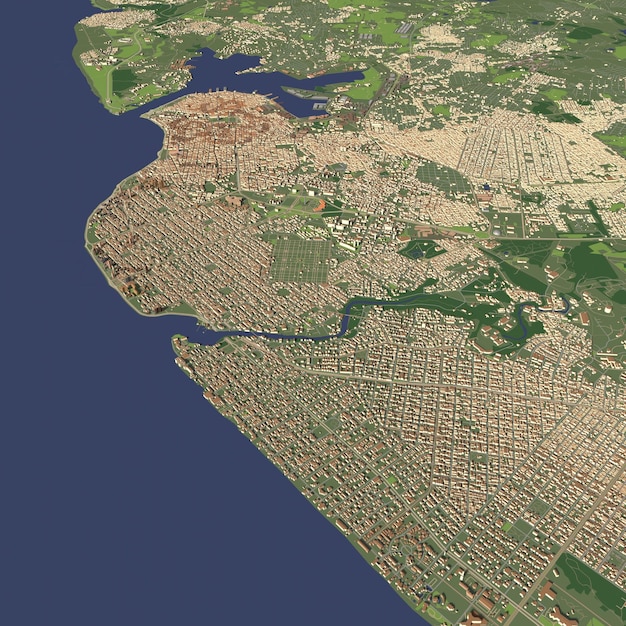US Aid to Yemen: Analyzing Humanitarian Efforts and Challenges

The US response to the humanitarian crisis in Yemen involves providing significant aid through various channels, addressing food insecurity, health crises, and displacement, but faces challenges related to access, security, and political instability.
The humanitarian crisis in Yemen is one of the worst in the world, leaving millions in desperate need of assistance. Understanding the US response to the humanitarian crisis in Yemen: what aid is being provided and what are the challenges? is crucial to addressing this ongoing tragedy and promoting stability in the region.
Understanding the Crisis in Yemen
Yemen has been embroiled in conflict since 2014, when Houthi rebels seized control of the capital city of Sana’a. This conflict has escalated into a multifaceted crisis, characterized by widespread food insecurity, collapse of healthcare systems, and mass displacement. Understanding the scope and drivers of this crisis is essential to appreciating the need for, and the challenges facing, humanitarian intervention.
The Roots of the Conflict
Several factors contributed to the ongoing conflict in Yemen, including political instability, economic grievances, and regional power struggles. The Houthi movement, representing Yemen’s Zaidi Shia Muslim minority, has long sought greater political and economic inclusion, leading to clashes with the central government. External actors, like Saudi Arabia and Iran, have also played a significant role in exacerbating the conflict through military and financial support to opposing sides.
The Humanitarian Impact
The conflict has taken a devastating toll on the Yemeni population. Millions have been displaced from their homes, and access to basic necessities like food, water, and healthcare has been severely restricted. The collapse of public services has further compounded the crisis, leaving the most vulnerable at risk of starvation and disease.

- Food Insecurity: Millions of Yemenis face acute hunger and malnutrition, with the risk of famine looming in many parts of the country.
- Healthcare Collapse: Hospitals and clinics have been damaged or destroyed by the conflict, and medical supplies are in short supply.
- Displacement: Millions of Yemenis have been forced to flee their homes due to the fighting, seeking refuge in overcrowded camps or urban areas.
The crisis in Yemen demands a comprehensive and coordinated humanitarian response, involving international actors, local organizations, and the Yemeni people themselves. The following sections will delve into the specifics of US aid and interventions.
Overview of US Humanitarian Aid to Yemen
The United States has been a significant provider of humanitarian aid to Yemen over the years. Recognizing the severity of the crisis, the US government has committed substantial resources to address the immediate needs of affected populations. However, the nature and effectiveness of this aid are constantly under scrutiny.
Types of Aid Provided
The US provides assistance through various channels, including direct funding to international organizations like the World Food Programme (WFP) and UNICEF, as well as support to non-governmental organizations (NGOs) operating in Yemen. This aid encompasses a wide range of sectors, from food assistance and healthcare to water and sanitation.
Specifically, the US aid focuses on addressing the most pressing needs of the Yemeni people:
- Food Assistance: Providing food rations, nutritional supplements, and support for agricultural activities.
- Healthcare: Funding medical facilities, providing essential medicines and supplies, and supporting healthcare workers.
- Water and Sanitation: Improving access to clean water, sanitation facilities, and hygiene promotion programs.
- Protection: Supporting programs to protect vulnerable populations, including women, children, and displaced persons, from violence and exploitation.
Funding Levels and Trends
US funding for humanitarian assistance to Yemen has varied over time, depending on the severity of the crisis and the political context. While the US has been one of the largest donors, there have been fluctuations in funding levels, raising concerns about the long-term sustainability of aid efforts. Examining the trends in US aid provides insights into the priorities and constraints shaping the response to the crisis.
The US commitment to aid is critical, but it’s not without its set of challenges. The ongoing conflict, access restrictions, and corruption impede aid delivery and undermine the effectiveness of humanitarian interventions. The next sections will explore these hurdles.
Challenges in Delivering Aid Effectively
Despite the significant amount of aid provided, delivering assistance effectively in Yemen is fraught with challenges. The ongoing conflict, access restrictions imposed by warring parties, and widespread corruption hinder aid delivery and undermine the impact of humanitarian interventions. Overcoming these obstacles is crucial to ensuring that assistance reaches those who need it most.
Security Concerns
The volatile security situation in Yemen poses a significant threat to aid workers and impedes the delivery of assistance. Attacks on humanitarian facilities and personnel, as well as the presence of landmines and unexploded ordnance, make it difficult to reach vulnerable populations in remote areas. Ensuring the safety and security of aid workers is paramount to maintaining humanitarian operations.
Access Restrictions
One of the biggest challenges in delivering aid to Yemen is gaining access to those in need. Restrictions imposed by the various parties to the conflict—including the Saudi-led coalition and the Houthi rebels—prevent aid organizations from reaching many areas. Bureaucratic hurdles, arbitrary checkpoints, and outright denial of access impede the timely delivery of assistance, prolonging the suffering of affected populations.

Corruption and Diversion
Corruption and diversion of aid are also significant concerns in Yemen. Weak governance structures, lack of transparency, and impunity for corrupt officials enable the theft and misappropriation of humanitarian assistance. This not only deprives vulnerable populations of much-needed aid but also undermines trust in humanitarian organizations and donors. Strengthening accountability mechanisms and combating corruption are essential to ensuring that aid reaches its intended recipients.
Delivering effective aid in Yemen requires navigating a complex and dangerous environment. Security threats, access restrictions, and corruption all pose significant obstacles to humanitarian operations. However, by addressing these challenges head-on and adopting innovative approaches, it is possible to improve the impact of aid efforts and alleviate the suffering of the Yemeni people.
The Role of Different Actors in the Aid Effort
The humanitarian response in Yemen involves a wide range of actors, including international organizations, NGOs, and local community groups. Each plays a unique role in addressing the multifaceted challenges of the crisis. Understanding the contributions and limitations of each actor is essential for coordinating aid efforts and maximizing their impact.
International Organizations
International organizations such as the UN agencies (WFP, UNICEF, WHO, UNHCR) play a central role in coordinating and implementing humanitarian programs in Yemen. These organizations have a global mandate and extensive experience in addressing complex emergencies. They provide food assistance, healthcare, water and sanitation, protection, and other essential services to affected populations. However, they also face challenges related to access, funding, and coordination with other actors.
Non-Governmental Organizations (NGOs)
NGOs, both international and local, are crucial partners in the humanitarian response. They often operate on the front lines, providing direct assistance to vulnerable communities. NGOs bring a diverse range of expertise and resources to the aid effort, addressing specific needs such as food security, healthcare, education, and protection. They can be more flexible and adaptable than larger international organizations, but face challenges related to funding, security, and coordination.
Local Community Groups
Local community groups play a vital role in the humanitarian response, particularly in reaching remote and underserved areas. These groups have a deep understanding of local needs and cultural contexts, enabling them to deliver assistance in a more effective and culturally sensitive manner. They often collaborate with international organizations and NGOs to implement programs and provide support to affected populations. However, they often lack the resources and capacity to address the full scale of the crisis.
The involvement of these different actors is crucial in mounting a coordinated and effective humanitarian response to the crisis in Yemen. International organizations can bring in large-scale resources while NGOs can assist with last-mile delivery and community-level engagement.
Impact of US Aid on the Ground
The impact of US aid on the ground in Yemen is a subject of ongoing debate. While the US has contributed significant resources to address the humanitarian crisis, assessing the actual impact of this aid is challenging due to security concerns, access restrictions, and the complexity of the situation. Examining the available evidence provides insights into the positive and negative consequences of US aid efforts.
Positive Outcomes
US aid has undoubtedly saved lives and alleviated suffering in Yemen. Food assistance has helped to prevent widespread starvation, while healthcare support has improved access to essential medical services. Water and sanitation programs have reduced the risk of disease outbreaks. Protection programs have provided support to vulnerable populations, including women, children, and displaced persons.
- Reduced risk of famine and starvation through food assistance programs.
- Improved access to essential medical services through healthcare support.
- Decreased risk of disease outbreaks through water and sanitation programs.
Unintended Consequences
Despite these positive outcomes, US aid has also had some unintended consequences. The provision of food assistance can sometimes distort local markets, undermining the livelihoods of farmers and traders. Healthcare support can inadvertently strengthen the capacity of warring parties to sustain the conflict. Protection programs can create dependencies and unintended incentives. Careful consideration of these unintended consequences is essential to minimizing harm and maximizing the benefits of aid.
The impact of US aid in Yemen is a complex and multifaceted issue. While there have been undeniable benefits in terms of saving lives and alleviating suffering, there are also unintended consequences that need to be carefully considered. By learning from past experiences and adopting more effective approaches, the US can improve the impact of its aid efforts and contribute to a more sustainable and equitable future for Yemen.
Recommendations for Improving the US Response
To enhance the effectiveness and impact of the US response to the humanitarian crisis in Yemen, several recommendations can be considered. These include strengthening coordination, improving access, addressing corruption, and promoting sustainable solutions.
Strengthening Coordination
Improving coordination is key to ensuring that aid efforts are targeted and efficient. This involves enhanced communication and collaboration among US government agencies, international organizations, NGOs, and local community groups. Establishing clear roles and responsibilities, sharing information, and conducting joint assessments can help to avoid duplication and maximize the impact of aid.
This can be achieved through better communication and collaboration among different humanitarian actors, fostering a unified approach to address the complex needs of the Yemeni population.
Improving Access
Facilitating access to those in need is essential to delivering assistance effectively. The US government can use its diplomatic influence to press warring parties to remove restrictions on aid delivery and ensure the safety of humanitarian workers. Supporting negotiations for humanitarian corridors and ceasefires can also help to improve access to vulnerable populations.
This includes advocating for the removal of bureaucratic and security obstacles through diplomatic channels.
Addressing Corruption
Tackling corruption is critical to ensuring that aid reaches its intended recipients. The US government can support efforts to strengthen governance structures, promote transparency, and hold corrupt officials accountable. This involves providing technical assistance, supporting civil society organizations, and working with international partners to implement anti-corruption measures.
Promoting Sustainable Solutions
Addressing the root causes of the crisis is essential to achieving lasting solutions. The US government can support peace negotiations, promote political dialogue, and invest in economic development and social services. This involves working with the Yemeni people to build a more inclusive and equitable society, where all citizens have access to opportunities and resources.
| Key Point | Brief Description |
|---|---|
| 🌍 Humanitarian Crisis | Devastating impacts of conflict: food insecurity, healthcare collapse, displacement. |
| 💰 US Aid | Funds food, healthcare, sanitation via UN & NGOs. |
| 🚧 Challenges | Security risks, access issues, corruption hinder aid delivery. |
| 🤝 Recommendations | Improve access, fight corruption, strengthen aid partnerships. |
Frequently Asked Questions
▼
The primary cause is the ongoing armed conflict between the Houthi rebels and the Saudi-led coalition, which has severely disrupted the country’s economy and infrastructure.
▼
The US channels aid through international organizations like the UN and NGOs, focusing on food security, healthcare, and water sanitation programs to reach those most in need.
▼
Key challenges include security risks for aid workers, restricted access to vulnerable populations due to conflict, and corruption that diverts aid from its intended recipients.
▼
Yes, US aid has saved lives by providing food, medical care, and clean water, but its impact is limited by the challenges of reaching those in need and by unintended economic consequences.
▼
The US can improve its response by enhancing coordination among aid groups, advocating for better access, fighting corruption, and supporting sustainable peace and economic development initiatives.
Conclusion
The US response to the humanitarian crisis in Yemen is a complex undertaking marked by both significant contributions and substantial challenges. While US aid has played a crucial role in alleviating suffering and preventing widespread famine, its effectiveness is hamstrung by ongoing conflict, access restrictions, and corruption. By strengthening coordination, improving access, addressing corruption, and promoting sustainable solutions, the US can enhance the impact of its aid efforts and contribute to a more stable and prosperous future for Yemen.





